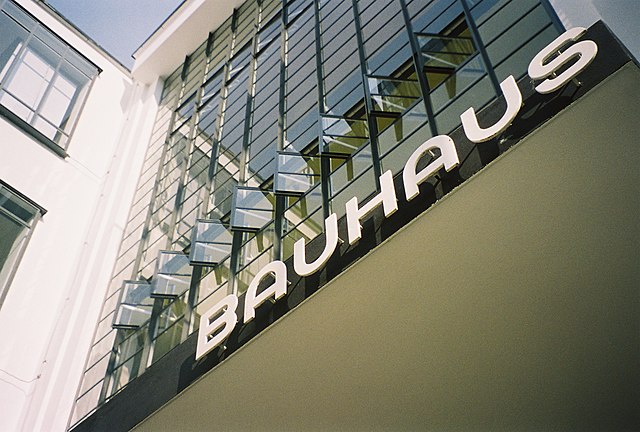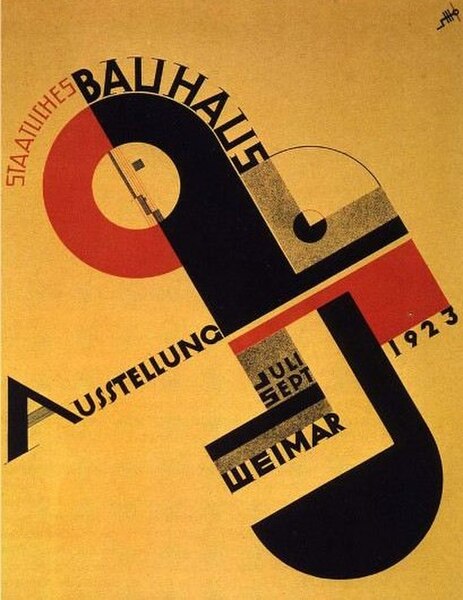Bauhaus and its Sites in Weimar, Dessau and Bernau
Bauhaus and its Sites in Weimar, Dessau and Bernau is a World Heritage Site in Germany, comprising six separate sites which are associated with the Bauhaus art school. It was designated in 1996 with four initial sites, and in 2017 two further sites were added.
Bauhaus Dessau building
A studio, former main Bauhaus Weimar building, built 1904–11
Haus am Horn, Weimar, built 1923
The student accommodation wing, Bauhaus Dessau
The Staatliches Bauhaus, commonly known as the Bauhaus, was a German art school operational from 1919 to 1933 that combined crafts and the fine arts. The school became famous for its approach to design, which attempted to unify individual artistic vision with the principles of mass production and emphasis on function. Along with the doctrine of functionalism, the Bauhaus initiated the conceptual understanding of architecture and design.
Typography by Herbert Bayer above the entrance to the workshop block of the Bauhaus Dessau, 2005
Bauhaus founder Walter Gropius (1883–1969)
Poster for the Bauhausaustellung (1923)
The main building of the Bauhaus-University Weimar. Built between 1904 and 1911 and designed by Henry van de Velde to house the sculptors' studio at the Grand Ducal Saxon Art School, it was designated a UNESCO World Heritage Site in 1996.








